Butterfly effect: Bill provides hope for declining Texas wildlife
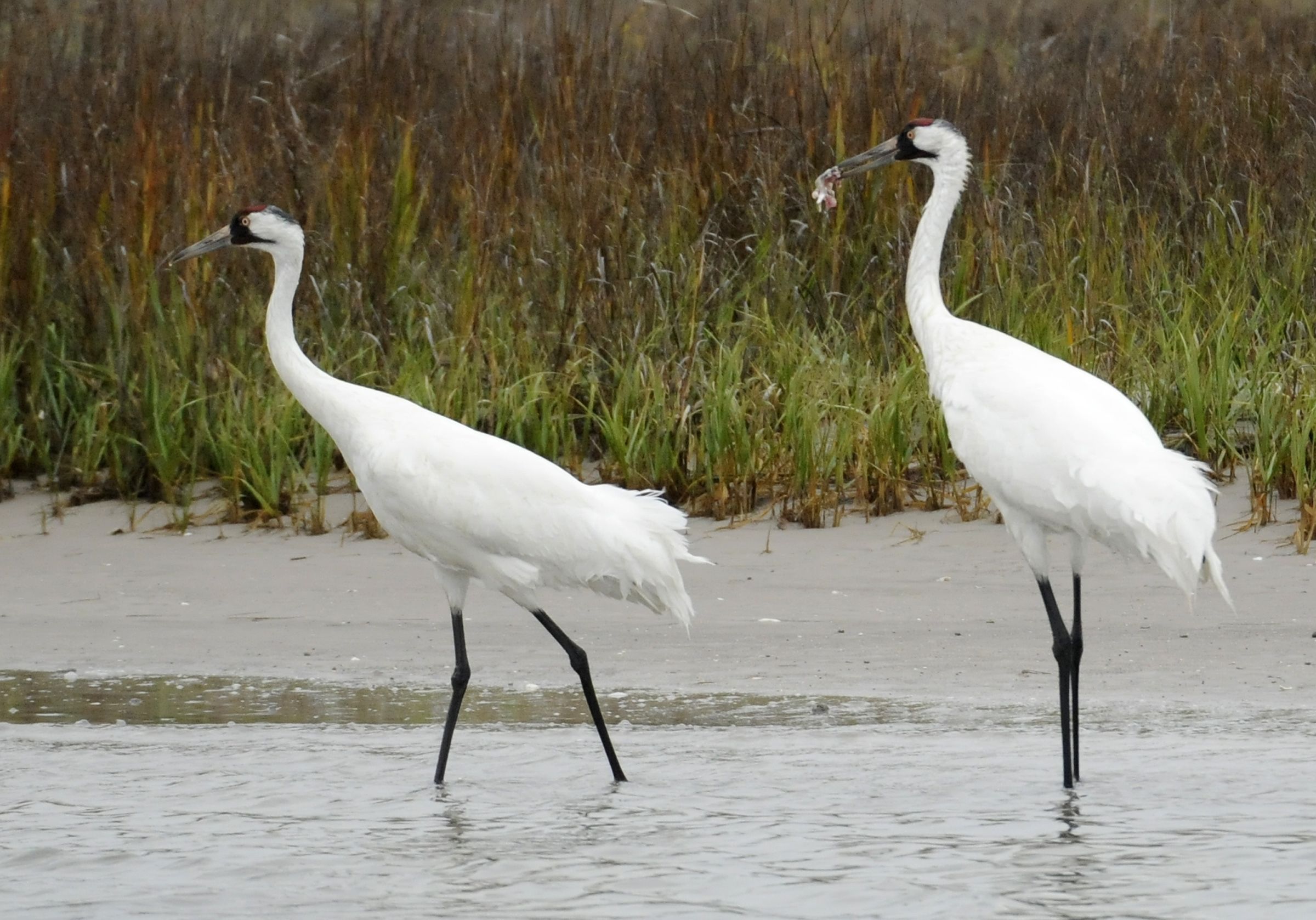
Many Texan plants and animals are threatened with extinction, but rescue efforts are overlooked and underfunded.
The Recovering America’s Wildlife Act could provide critical funding to save species before it is too late.
For decades, species like the white-tailed deer, quail and ducks have thrived in Texas. But lesser-known wildlife, like the American bumblebee, lack the resources and attention they need to survive.
“I have a special place in my heart for many of the at-risk species that have historically been left behind in funding—turtles, frogs, butterflies, bumblebees, coastal birds, native plants… Most of the species in decline today, and that are also the most underfunded, are considered ‘non-game.’”
Across the U.S., 80% of state conservation is funded by hunting and fishing licenses, permits and taxes. Because of hunters’ outsize impact, “game species” – animals that can be hunted or fished – get the lion’s share of money and attention.
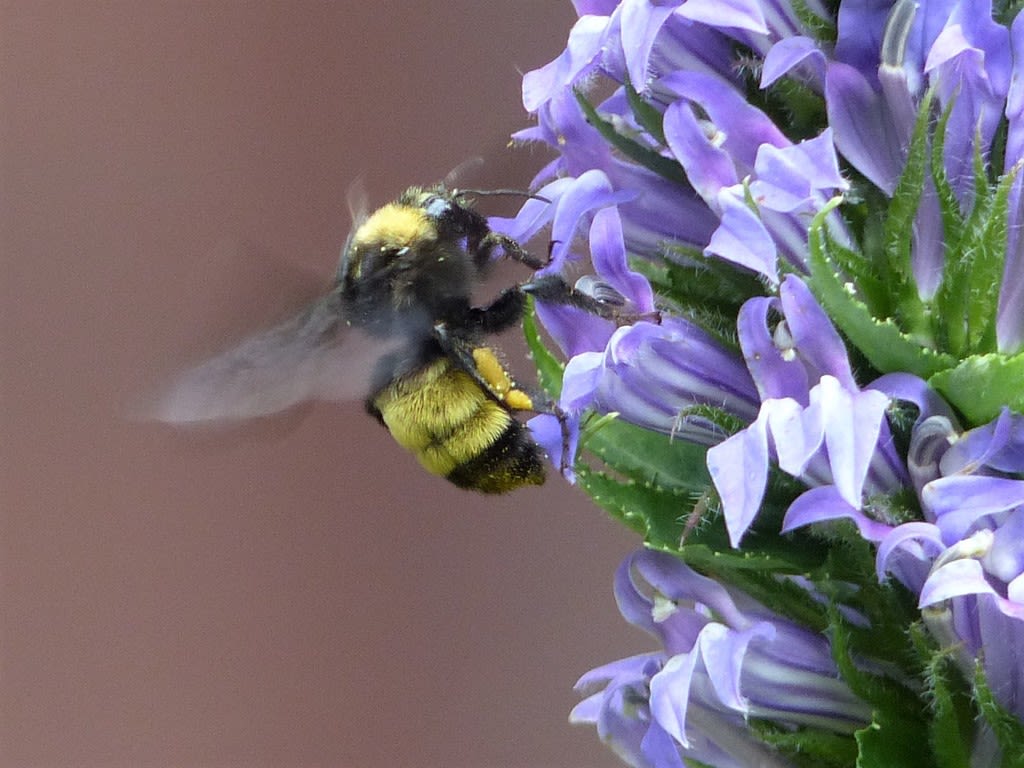
An American bumblebee visits a flower in Missouri on Aug. 27, 2020. (Photo by beewonder on iNaturalist/Public Domain)
An American bumblebee visits a flower in Missouri on Aug. 27, 2020. (Photo by beewonder on iNaturalist/Public Domain)
However, nongame wildlife make up over 90% of species in Texas, and many are on the decline. Wildlife are losing habitat to agriculture, development and climate change, and many species struggle to compete against invasive species such as zebra mussels and feral pigs.
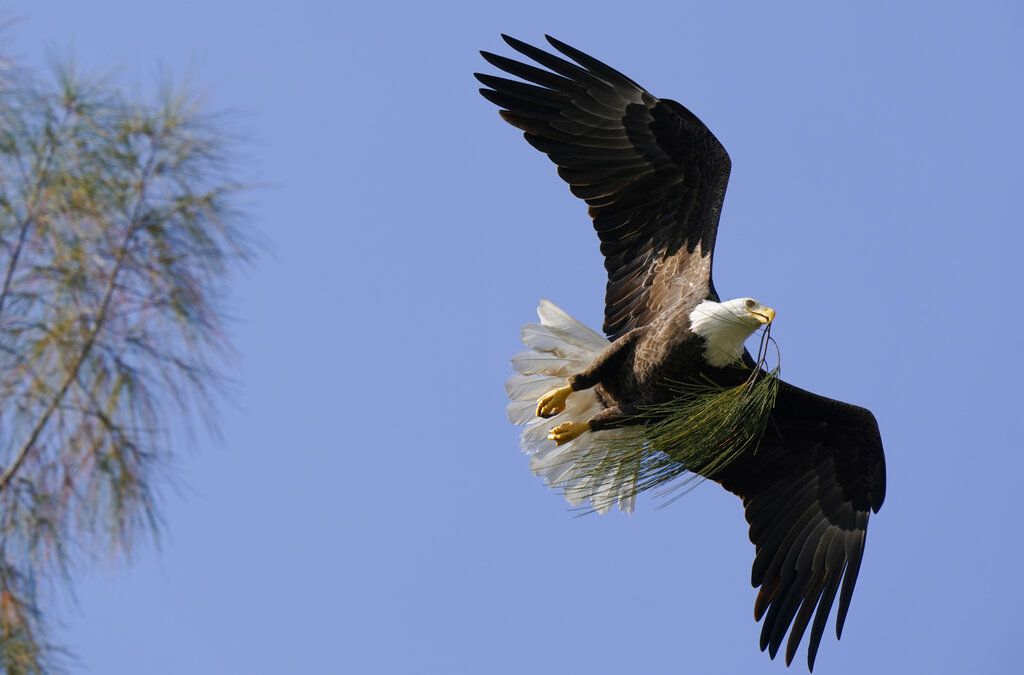
A bald eagle brings pine needles to a nest it is building, Dec. 10, 2021, in Pembroke Pines, Fla. Recovery of some vulnerable species through restoration efforts has made comebacks more difficult for others in peril. Once-endangered animals, including the iconic bald eagle, sometimes jeopardize rarer species such as the great cormorant by eating them or outcompeting them for food and living space. (AP Photo/Wilfredo Lee)
A bald eagle brings pine needles to a nest it is building, Dec. 10, 2021, in Pembroke Pines, Fla. Recovery of some vulnerable species through restoration efforts has made comebacks more difficult for others in peril. Once-endangered animals, including the iconic bald eagle, sometimes jeopardize rarer species such as the great cormorant by eating them or outcompeting them for food and living space. (AP Photo/Wilfredo Lee)
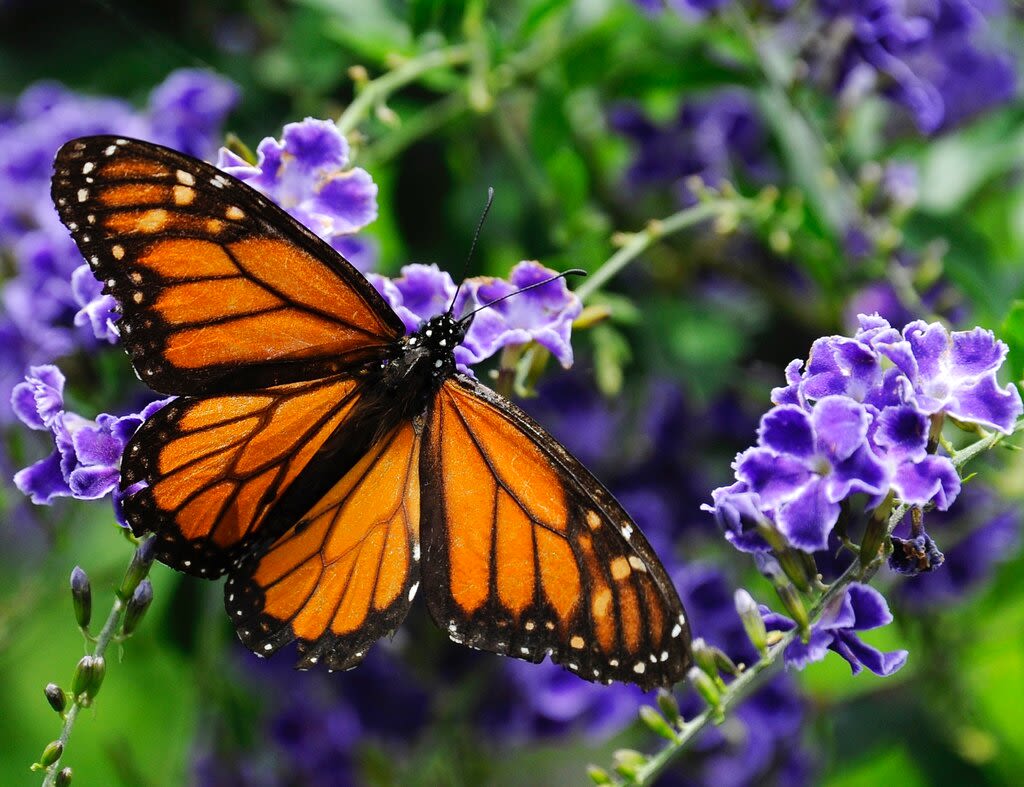
In this April 26, 2015 file photo, a monarch butterfly feeds on a duranta flower in Houston. Six states and the Federal Highway Administration signed an agreement Thursday, May 26, 2016, to make Interstate 35 roadsides more conducive to bees and butterflies by integrating plants that provide refuge and food for the pollinators in hopes of helping them recover from declining populations. (AP Photo/Pat Sullivan)
In this April 26, 2015 file photo, a monarch butterfly feeds on a duranta flower in Houston. Six states and the Federal Highway Administration signed an agreement Thursday, May 26, 2016, to make Interstate 35 roadsides more conducive to bees and butterflies by integrating plants that provide refuge and food for the pollinators in hopes of helping them recover from declining populations. (AP Photo/Pat Sullivan)
As a last-ditch measure to save species, conservationists turn to the Endangered Species Act of 1973. The landmark legislation is well-known for safeguarding America’s gray wolves, bald eagles and American alligators.
However, species often wait until they are on the brink of extinction to be eligible for listing status, and there is a years-long federal backlog for reviewing and adding species to the list.
The monarch butterfly, a Texas icon, met criteria for listing as of 2020, but 161 species take higher priority for listing - and scientists worry help may come too late for the declining insect.
Read more: Monarchs on the move: Helping butterflies fly safely through Texas
In total, more than a third of plants and animals in the U.S. are at risk of going extinct - but funding is less than 5% of what is needed to protect these threatened species and habitats.
Texas Parks & Wildlife Department maintains a list of the state’s species of concern, from the Acacia fairy shrimp to the zone-tailed hawk.
(Scroll through the list here if you like.)
Few of the list’s 1300 species are protected under the Endangered Species Act.
Picture: The zone-tailed hawk is a Threatened species in Texas, where loss of the cottonwood and willow trees it uses to nest may have caused its decline. Both parents help raise the chicks.
That’s where the Recovering America’s Wildlife Act comes in.
Instead of waiting until the last gasp, the bill – often called “RAWA” – would keep species from slipping toward extinction before it becomes too late or too expensive to rescue them, said Richard Heilbrun, wildlife diversity program director for Texas Parks & Wildlife Department.
RAWA would provide nearly $1.4 billion each year for states and tribes to fund solutions that would save Species of Greatest Conservation Need. Texas would receive more than $50 million a year to fulfill its Wildlife Action Plan, designed to protect species and stop declines before species are eligible for listing under the Endangered Species Act.
“Conservation is about time, people and money,” said Heilbrun. “This provides all three.”
Threatened Texas wildlife
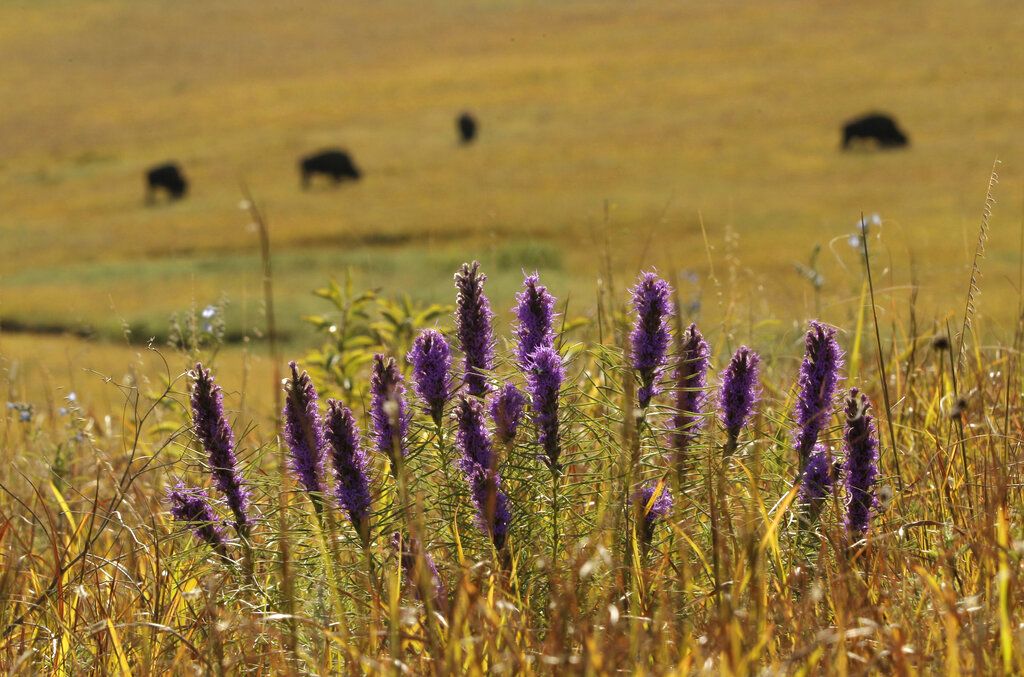
AP Photo/Charlie Riedel
AP Photo/Charlie Riedel
Prairie habitat
Rare tallgrass prairie covers less than 4% of its former range. Threatened prairie plants like milkweeds, beebalm and columbine support grassland birds, butterflies, lizards and a host of other native species. “We need big investments in prairie and grassland restoration in Texas,” said Rommel-Crump.
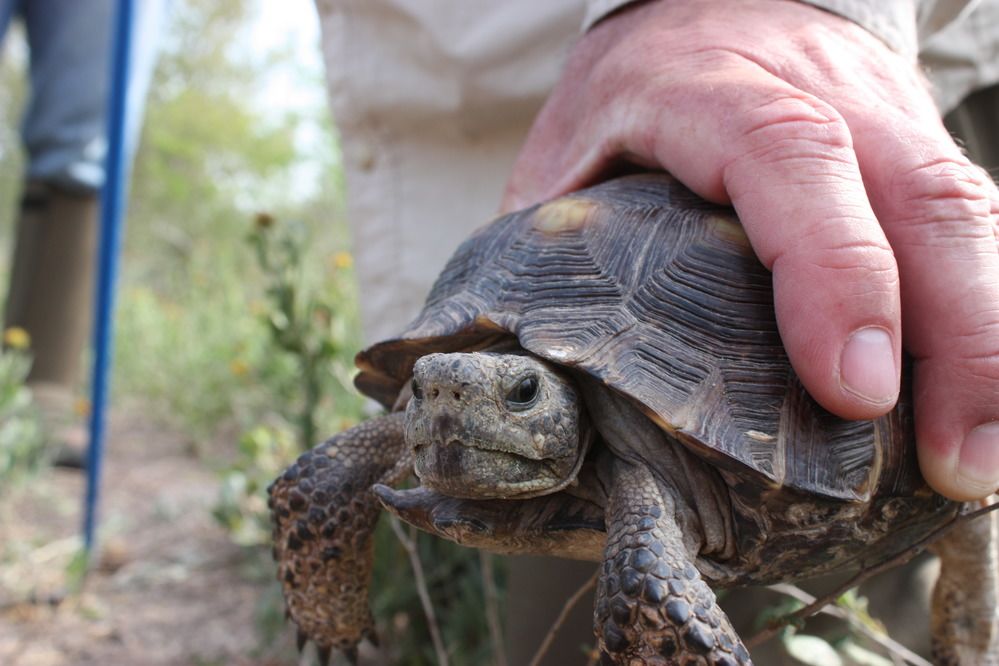
Photo: National Park Service/Public Domain
Photo: National Park Service/Public Domain
Texas tortoise
The Texas tortoise is the only true tortoise in the state. The species reproduces as it does everything else – slowly, so collection for the pet trade drove the tortoise into decline. Researchers hope bans on selling the tortoises and new habitat protections will help the species recover.
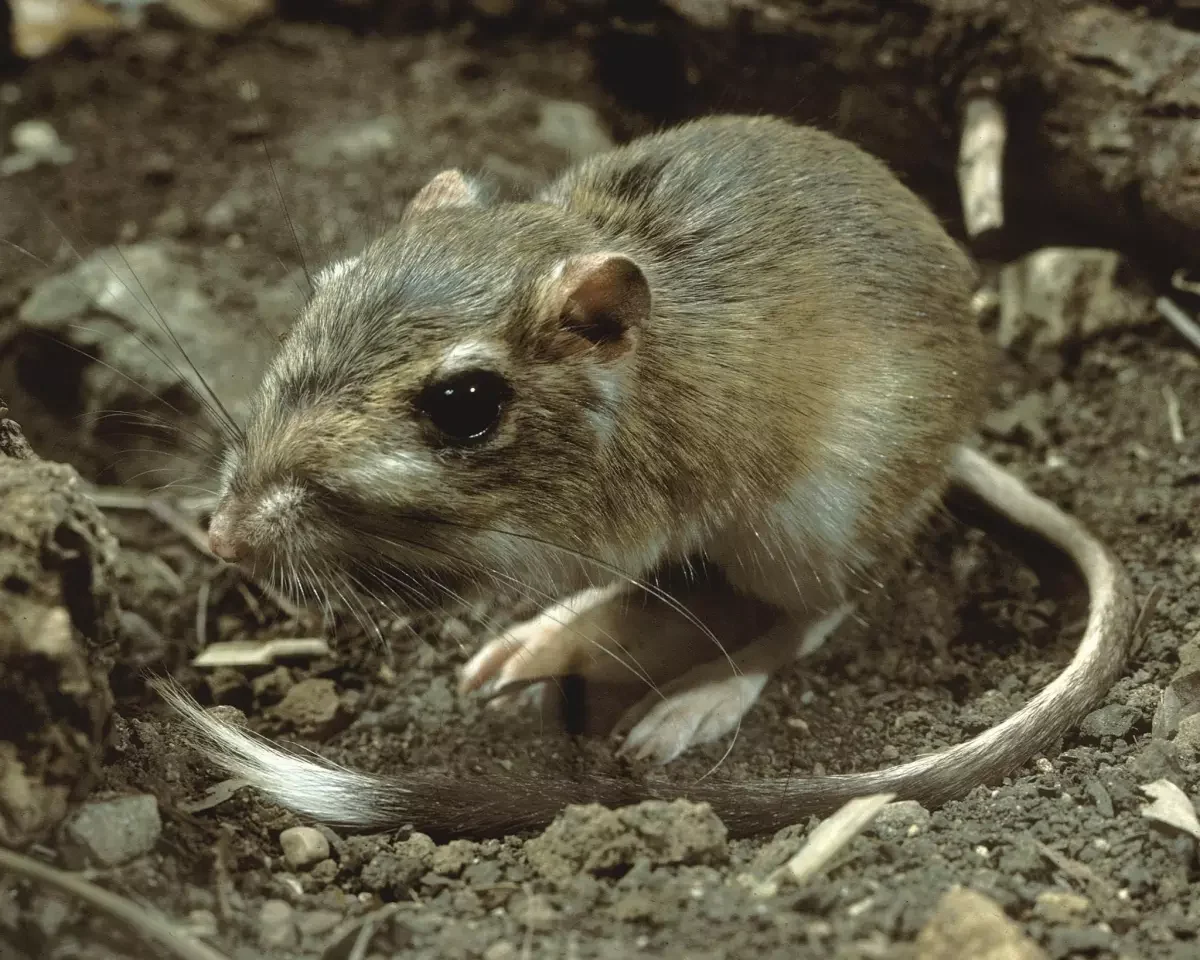
Photo: TPWD/Public Domain
Photo: TPWD/Public Domain
Texas kangaroo rat
The Texas kangaroo rat digs underground dens and emerges at night to forage on plants. Accustomed to clay soils and hot weather, the rodent can acquire all the water it needs from its food. The species is Threatened in Texas and under review for protection under the Endangered Species Act.
Other species, like the golden-cheeked warbler, are federally protected but still need help. Recent legislation could threaten the Ashe juniper trees the warbler relies on for habitat in Central Texas. The golden-cheeked warbler is the only bird to breed exclusively in Texas, so conservation within the state will make or break the warbler’s survival.
Many species also offer economic and environmental benefits for Texas residents.
“Pollinators, that’s a perfect example,” said John Shepperd, executive director of the advocacy organization Texas Foundation for Conservation.
As much as one-third of what we eat is pollinated by animals, including tomatoes, blueberries and chocolate, as well as cash crops like cotton. Imperiled Texas pollinators, including bees and butterflies, would benefit from the Recovering America’s Wildlife Act and boost local agriculture.
(Texans should also give a nod to the Endangered lesser long-nosed bat. This 3-inch critter pollinates the agave plant in the Southwest U.S., enabling tequila production.)
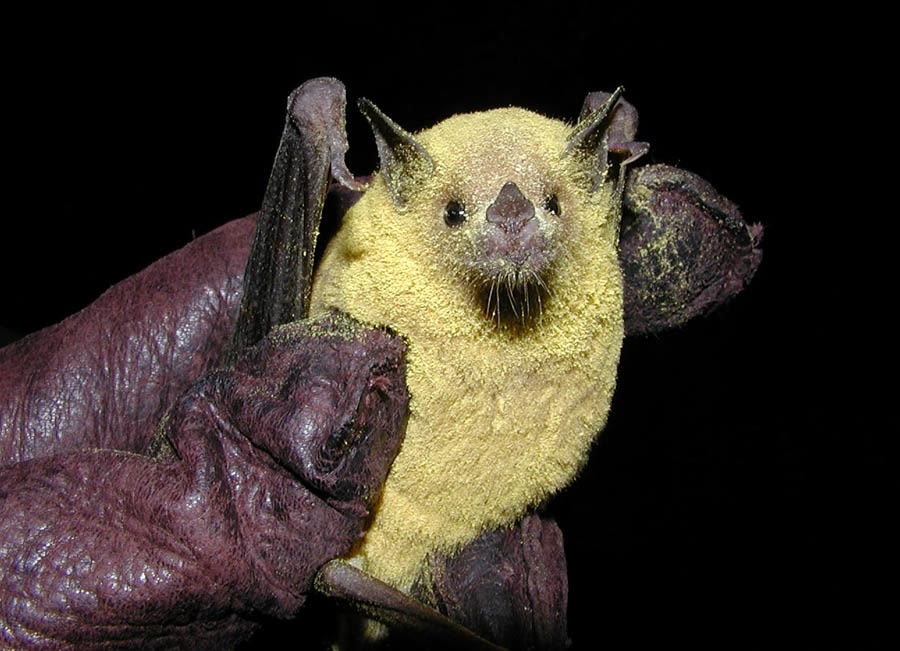
The Lesser long-nosed bat is a major pollinator in the Southwest desert. This bat at Organ Pipe Cactus National Monument in Arizona is covered with pollen from the agave flower. (Photo by National Park Service/Public Domain)
The Lesser long-nosed bat is a major pollinator in the Southwest desert. This bat at Organ Pipe Cactus National Monument in Arizona is covered with pollen from the agave flower. (Photo by National Park Service/Public Domain)
Meanwhile, freshwater mussels – clam-like invertebrates – filter the water Texans use daily and recycle nutrients into the environment. Healthy ecosystems also provide critical services such as reducing flood damage and capturing carbon.
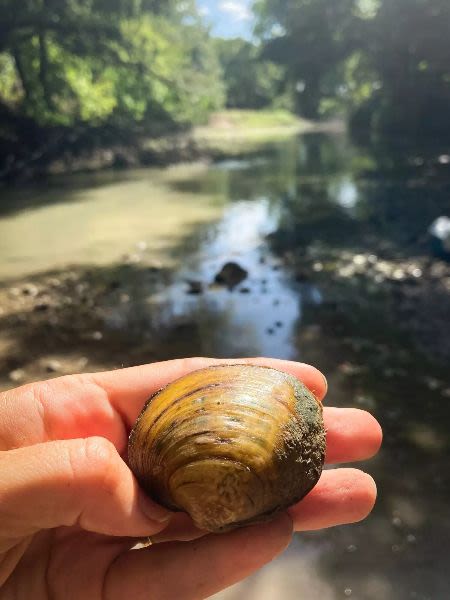
The Texas pimpleback only occurs in streams in the Texas Hill Country and is considered for listing under the Endangered Species Act. The species also joins the ranks of mussels with unfortunate names, from the Texas pigtoe to the fatmucket. (Photo by Aubry Buzek/USFWS, Public Domain)
The Texas pimpleback only occurs in streams in the Texas Hill Country and is considered for listing under the Endangered Species Act. The species also joins the ranks of mussels with unfortunate names, from the Texas pigtoe to the fatmucket. (Photo by Aubry Buzek/USFWS, Public Domain)
And Texans enjoy their nongame wildlife. From watching bats emerge from the Congress Avenue Bridge in Austin to scuba-diving with sea turtles in the Gulf of Mexico, outdoor recreation and wildlife watching activities generate $54 billion in revenue statewide.
Shepperd noted there are more jobs in outdoor recreation than in the oil and gas industry in Texas.
“Game species are not the only critters that help the world go 'round," said Shepperd.
Conservationists already have a wish list of programs that RAWA could fund.
Rommel-Crump said more research is needed to help many species of concern. “Often, basic questions need to be answered, such as, ‘How many are there? Where do they go? What do they need in their habitat? What issues are impacting them? What conservation tools can be used to help them?’” she said.
Texas Parks & Wildlife would parcel out RAWA funding to nonprofits, universities, nature centers and other organizations to learn more about what populations need to recover.
If research were expanded, said Rommel-Crump, “That means more student internship opportunities, more graduate research opportunities and more conservation jobs once students graduate.”
For other species, bold solutions such as conservation easements, land acquisitions and habitat restoration programs need funding and support to become realities.
The Texas horned lizard, a beloved state ambassador, all but disappeared from East Texas in the 1970s. In the past 20 years, researchers worked out how to restore its habitat, breed lizards in captivity and successfully reintroduce them in parts of their former range.
“We just need money to grow more lizards,” said Heilbrun.
Read more: ‘Riff ram bah zoo’: TCU joins fight to save horned lizards
Beyond boots on the ground, conservationists said educating Texans about nature and how to help native wildlife is critical to sustaining the state's natural places and species.
“One of the reasons we’re in this mess of declining wildlife populations is public knowledge and perceptions about wildlife and nature,” said Heilbrun.
RAWA would include funding for educational and recreational programs to get Texans outdoors, from organizing student field trips to bolstering local nature education centers.
For Shepperd, RAWA is meant to not only help wildlife but also to serve the next generation of Texans.
“Being able to get these things started and underway now will really help us keep Texas the way that we know and love it now, and give future Texans the opportunity to enjoy our fish and wildlife resources in 30 or 40 years as we do today,” said Shepperd.
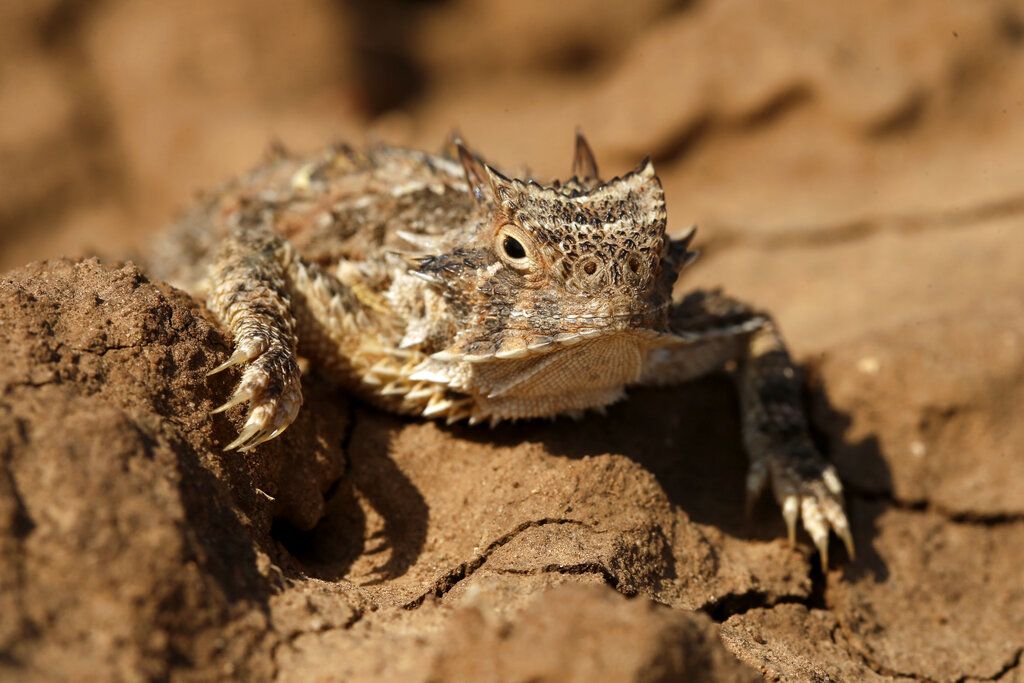
A Texas horned lizard (Phrynosoma cornutum), or commonly called a horned toad rests in a plowed field April 22, 2015 near Snyder, Tex. (AP Photo/Charlie Riedel)
A Texas horned lizard (Phrynosoma cornutum), or commonly called a horned toad rests in a plowed field April 22, 2015 near Snyder, Tex. (AP Photo/Charlie Riedel)
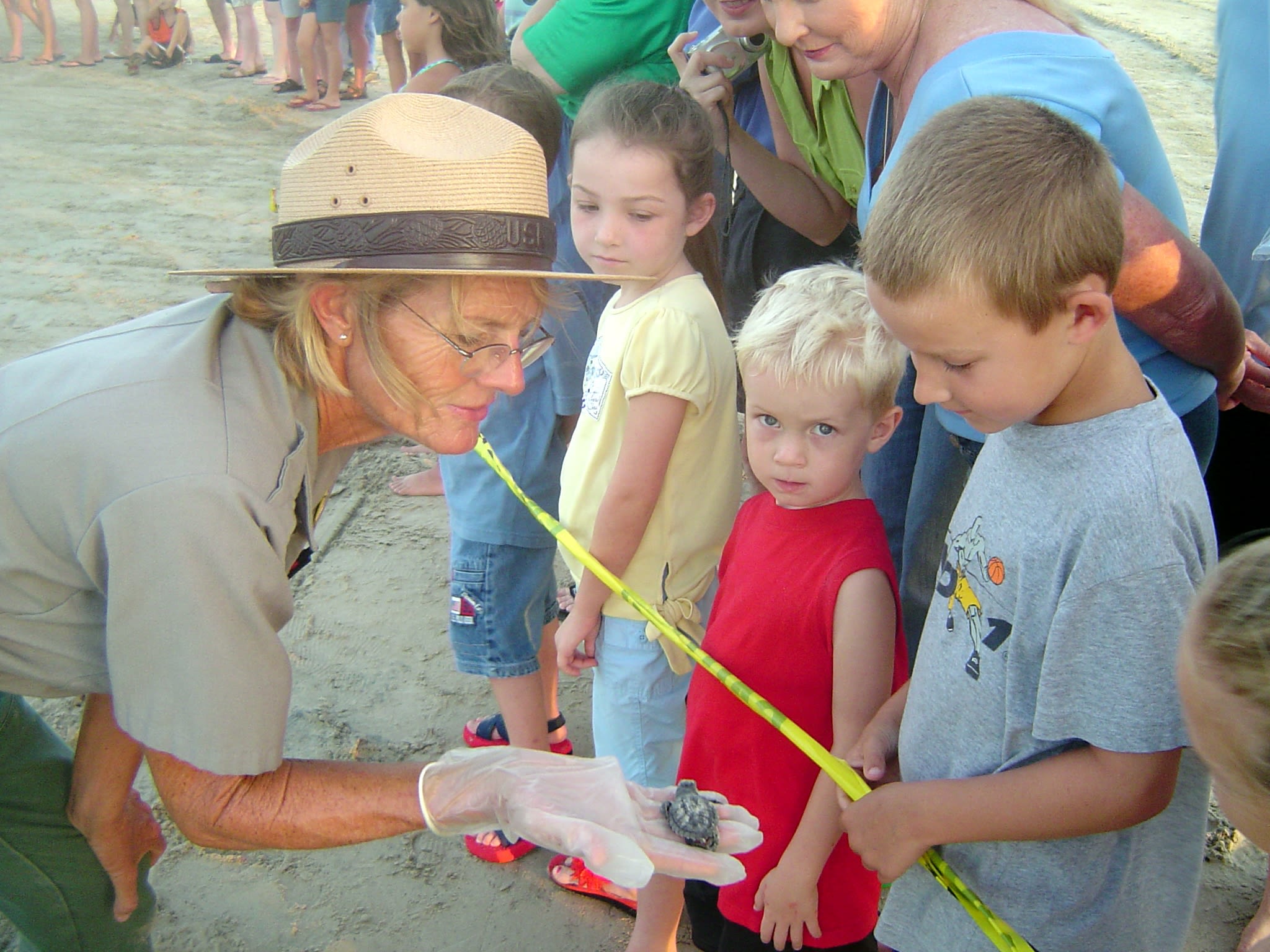
A ranger shows children a sea turtle hatchling at Padre Island National Seashore in Texas. Kids who spend time in nature are happier, healthier and more likely to care for the environment, according to recent studies. (Photo by National Park Service/Public Domain)
A ranger shows children a sea turtle hatchling at Padre Island National Seashore in Texas. Kids who spend time in nature are happier, healthier and more likely to care for the environment, according to recent studies. (Photo by National Park Service/Public Domain)
What’s next?
Last year, RAWA passed the House and gathered bipartisan support in the Senate, but legislators could not decide where to source funding. The bill died after being left off the omnibus package in December 2022 without a vote.
To pass the Recovering America’s Wildlife Act, legislators and advocates have started all over again, reintroducing the bill S.1149 in the U.S. Senate in March 2023. The legislation was introduced by Sens. Martin Heinrich (D-NM) and Thom Tillis (R-NC); they and cosponsors say funding discussions are ongoing, but the bill will not result in new taxes.
Meanwhile, conservationists are scrambling to sustain Texas species, ecosystems and economies with a fraction of the needed funds.
Recovering America’s Wildlife Act would enable biologists, landowners and others to plan long-term for species’ survival instead of waiting every few years for project funding to expire, said Heilbrun.
“Conservation takes time… We know how to do this stuff,” said Heilbrun. “So we have the formula. We just need the time and resources to be able to get it done.”
